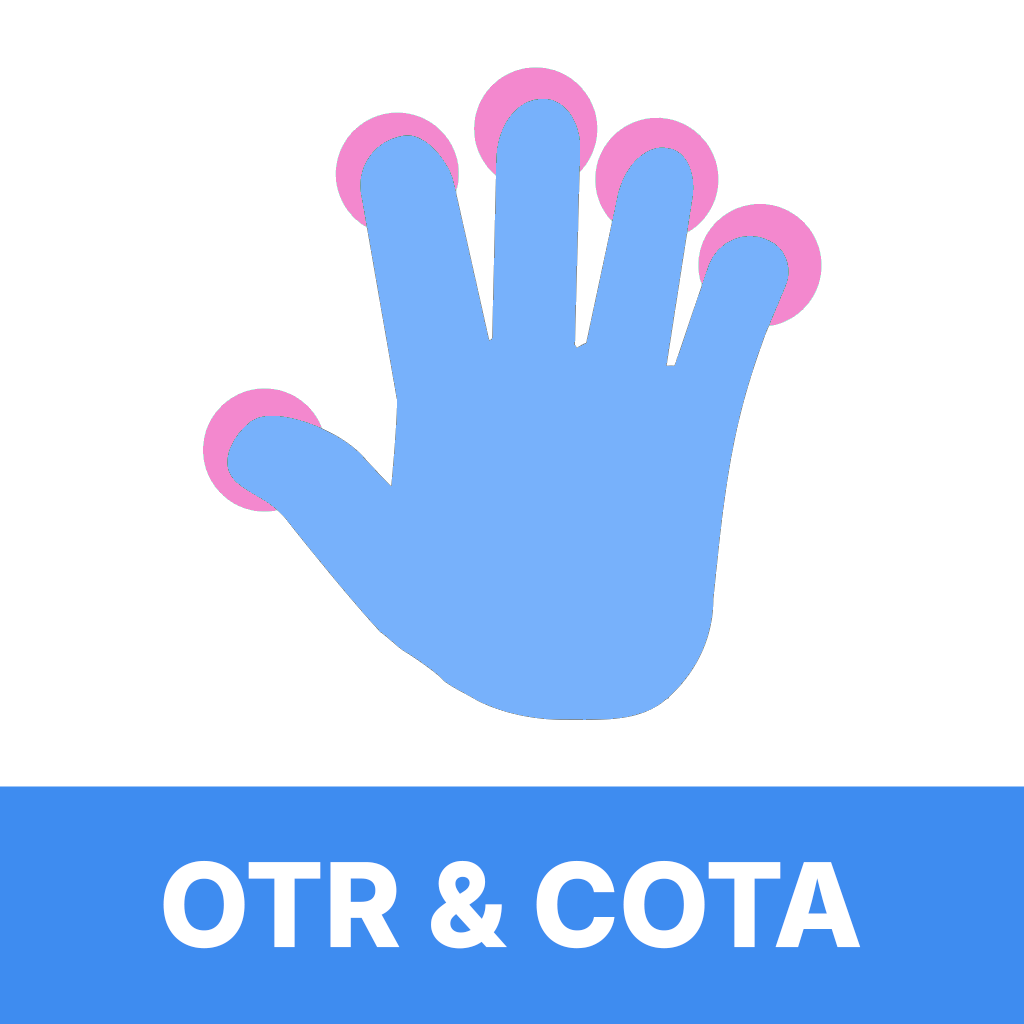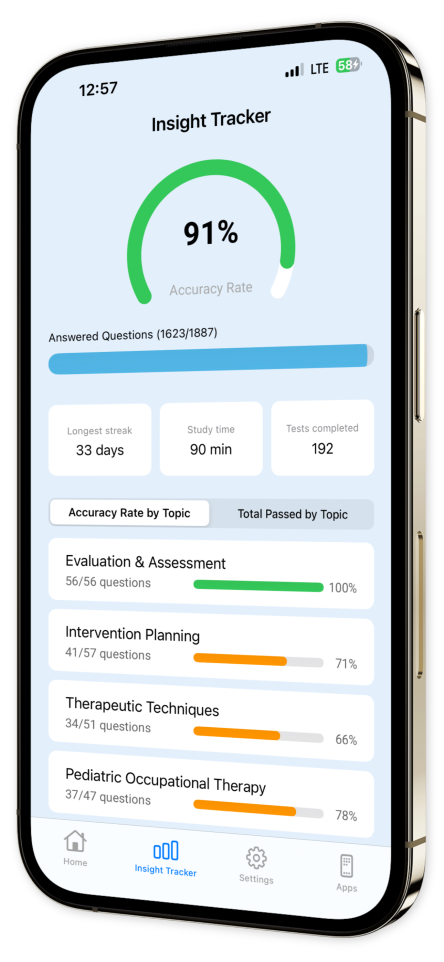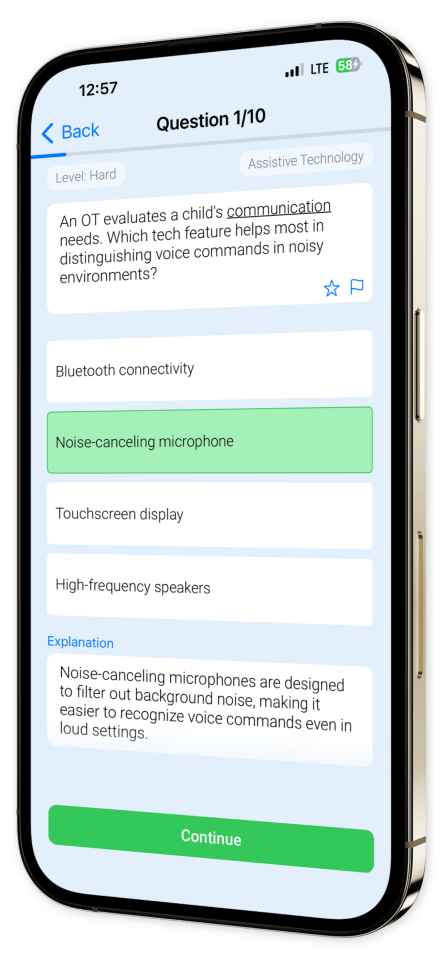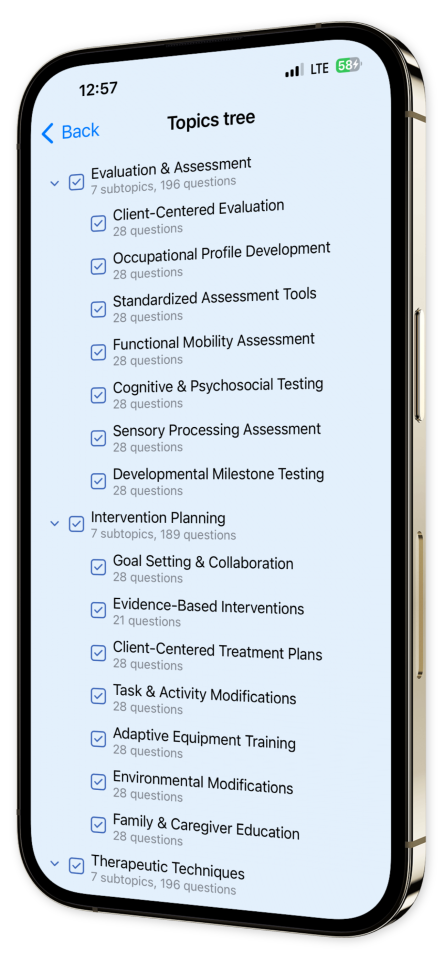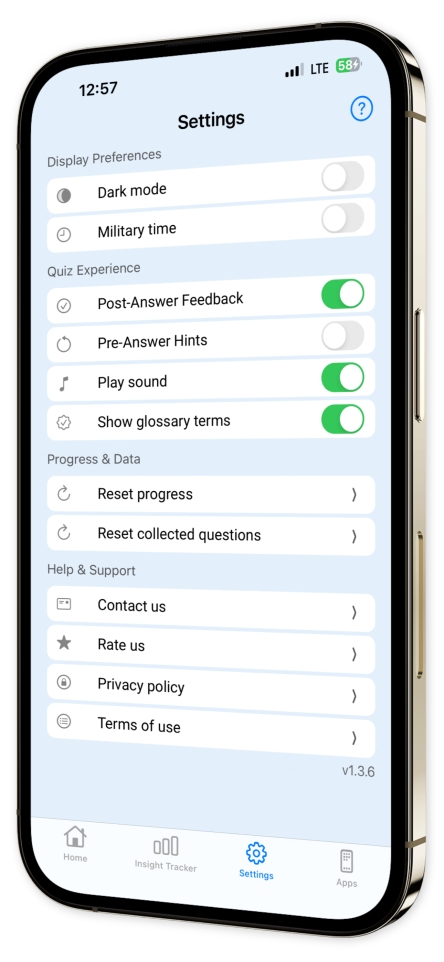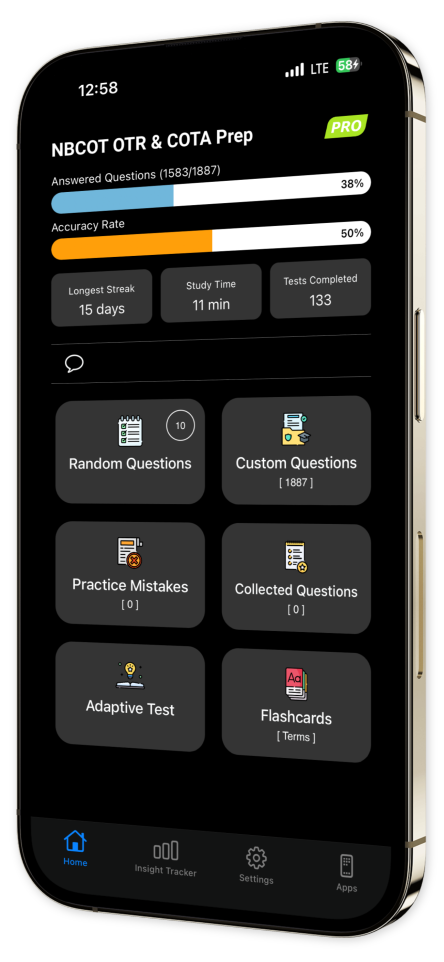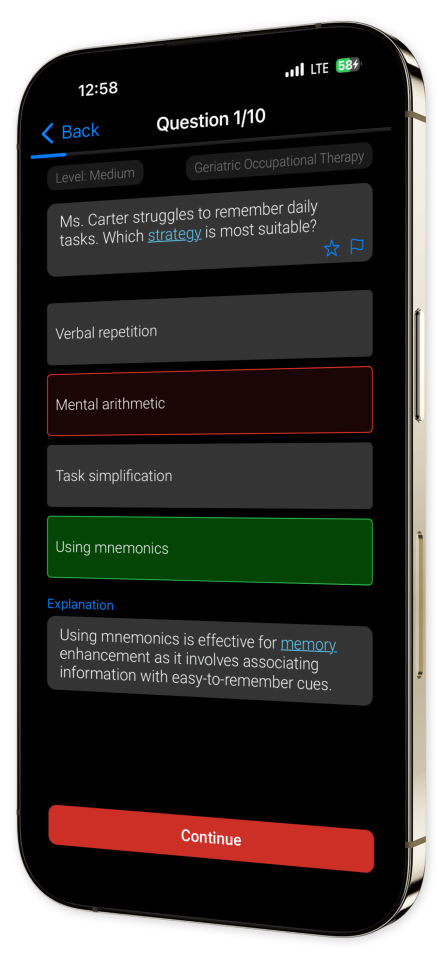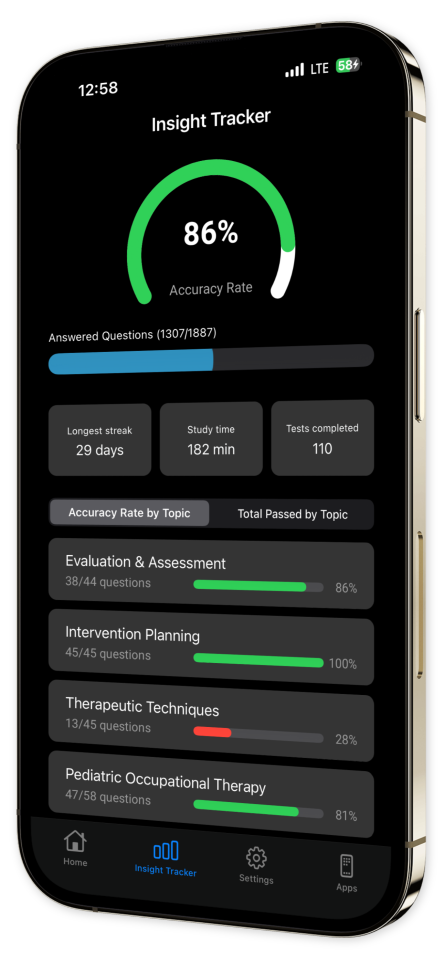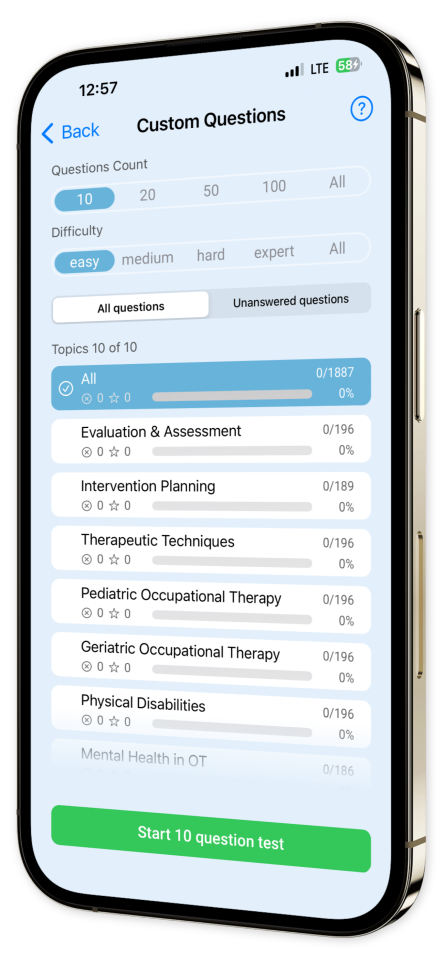
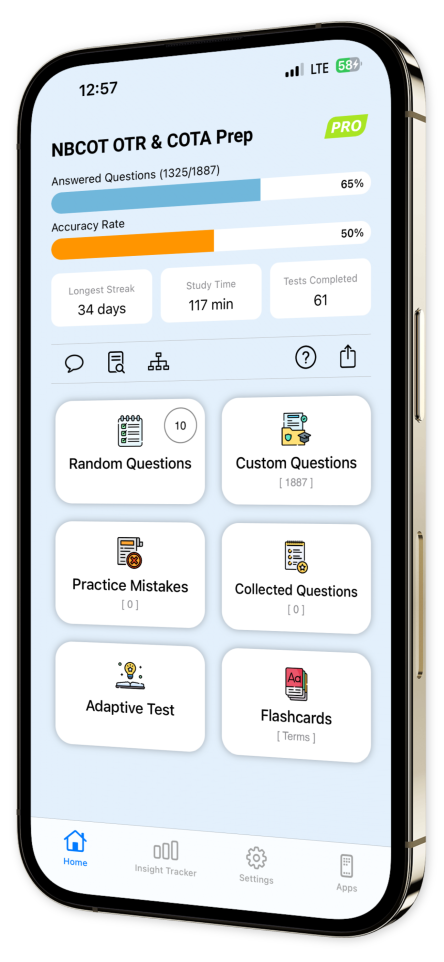
NBCOT OTR & COTA Prep iOS App
Prepare with excellence for your NBCOT OTR & COTA exams with our all-encompassing NBCOT OTR & COTA Prep app!
Our app is meticulously crafted to simulate the testing environment and equip you with the deepest understanding and proficiency needed for Occupational Therapy certification. Immerse yourself in a diverse array of practice questions meticulously curated to cover all pivotal areas.
Key Features:
Extensive Question Bank: Dive into a vast collection of practice questions to ensure comprehensive preparation across all essential topics.
In-Depth Explanations: Every question is accompanied by detailed explanations to enhance your understanding and aid retention.
Custom Test Creation: Tailor your study experience by creating personalized quizzes focusing on specific topics and question types, honing in on the areas you wish to strengthen.
Progress Tracking: Monitor your advancement with our sophisticated progress tracking tools, offering a clear view of your improvement over time.
Offline Access: Study at your convenience, wherever you are, without the constraints of needing an internet connection. Perfect for busy professionals on the move.
User-Friendly Interface: Navigate effortlessly through our thoughtfully designed app, keeping you centered on mastering the material without distractions.
Download NBCOT OTR & COTA Prep today and embrace a superior pathway to your Occupational Therapy certification success!
Your dream of becoming a certified occupational therapist is within reach. Let us help you prepare with precision and confidence. Empower your career with our dedicated app!
Content Overview
Explore a variety of topics covered in the app.
Example questions
Let's look at some sample questions
What is the primary goal of client-centered evaluation in occupational therapy?
To diagnose medical conditionsTo identify client goals and needsTo create a standardized care planTo assess only physical abilities
Client-centered evaluation focuses on understanding the client's personal goals and needs to tailor a specific occupational therapy plan.
In a client-centered assessment, which information is MOST essential?
Client's personal goalsStandardized test scoresClinical observationsFamily's perspective
Client-centered assessments prioritize the client's personal goals to ensure the intervention plan aligns with their aspirations and motivations.
A client sets a goal outside standard therapy. What should be the priority for the OT?
Dismiss the goalModify therapy to include their goalPrioritize standardized goalsRefer to another professional
Modifying therapy to include the client's goal upholds a client-centered approach, respecting the client's wishes and enhancing engagement.
A client is unable to express goals in therapy. What's the next best step for client-centered evaluation?
Use a standardized questionnaireAssess past medical historyConduct an occupational profilePerform a cognitive assessment
Conducting an occupational profile helps gather important client background and preferences, aligning the evaluation with client values and needs.
An OT assesses a child's handwriting in a classroom. How is context considered in this client-centered evaluation?
Ignore contextAssess outside schoolEvaluate interacting with peersFocus solely on peer reports
Observing the child within their natural environment provides insight into real-life challenges and aids in designing effective interventions.
Which framework is best for ensuring a comprehensive client-centered evaluation of occupational performance?
PEO ModelICF FrameworkMOHOErgonomic Model
The Person-Environment-Occupation Model considers individual factors and contexts, aligning well with client-centered principles.
What is critical when using goal attainment scaling with a client-centered focus?
Setting generic goalsTherapist leads goal-settingCollaborative goal developmentExclude family input
Client-centered practice emphasizes collaborative goal-setting to ensure the goals are meaningful and motivating for the client.
Who is primarily responsible for contributing to the occupational profile creation?
Occupational therapistFamily membersMedical doctorPhysical therapist
The occupational therapist is primarily responsible for collecting and compiling information into the occupational profile.
What aspect of an occupational profile helps identify barriers in a client's home environment?
Favorite activitiesMedical diagnosesEnvironmental contextSupport network
Understanding the environmental context allows for identifying physical and social barriers present in the client's living situation.
What is the primary benefit of including a client's goals in the occupational profile?
Increases complianceGuides intervention planningIncreases motivationImproves caregiver support
Including client goals in the occupational profile ensures that interventions are meaningful and tailored to the client's aspirations and needs.
